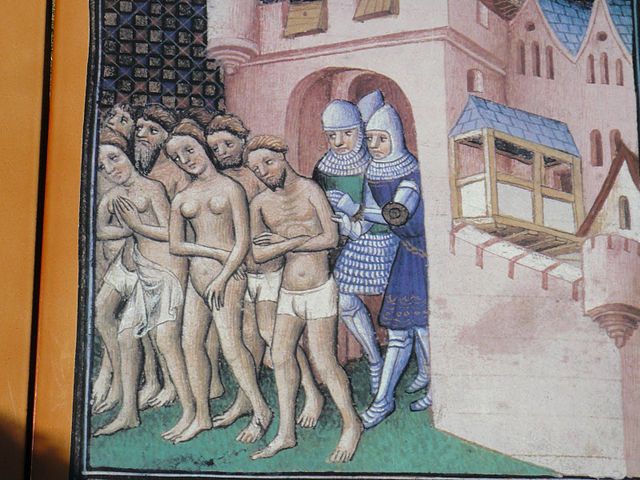
January 25, 2014, by Harry Cocks
The Heresy of Peter Garcias, Toulouse 1247
In 1247 a townsman of Toulouse named Peter Garcias was accused of heresy and made subject to a processus (the collection of evidence against the alleged heretic from a series of witnesses) administered by the inquisition. The statements in this case were from monks who claimed to have heard Peter proclaim a series of heretical propositions in a conversation with a Franciscan brother. Specifically, Peter was supposed by these witnesses to have clearly espoused the dualist beliefs of the Cathar sect (see also blog 17 July 2013, “The Cathar Heresy, Fact or Fiction”) which proposed that there were two gods, good and bad, the latter being the creator of the evil material world. In that view Christ, who was good, could not have taken human form or risen from the dead, a belief that was attributed to Peter Garcias by his accusers. He was also said to have attacked marriage, saying that “those whom the Church joined as man and wife, just like himself and his wife Ayma, live in prostitution.” The fact that he then claimed not to have known his wife carnally in the past two years fitted with the fact that Cathars were also said to renounce sex as the origin of fallen, material humanity. Not only that, but the Roman church was “a whore giving a drug and the power to drug all believing in her,” while miracles were a fraud and none that took a material form or “was possible to see with the eye” mattered. No one including St. Francis had ever really performed any miracles anyway. Peter doubted God’s goodness, saying that if he “could catch the god who made a thousand people and saved one and damned all the others, he would crush him and slash at him with his own nails and teeth as false and treacherous, and would spit in his face, saying ‘Die of gout!’”
This record of Peter’s heresy is contained in a new collection The Cathars and the Albigensian Crusade: A Sourcebook (Routledge, 2014) edited by Claire Taylor of Nottingham History, together with Catherline Léglu and Rebecca Rist of Reading University. The sourcebook outlines what can be known about the contours of heretical activity in the Languedoc in the twelfth and thirteenth centuries and its content challenges recent views of dualist heresy as something that existed mainly in the minds of inquisitors obsessed with the enemies of the faith and local rulers intent on rooting out and defeating political rivals.
Claire Taylor, Catherine Leglu and Rebecca Rist, (eds.), The Cathars and the Albigensian Crusade: A Sourcebook (Routledge, 2014)
http://www.routledge.com/books/details/9781408255506/
Public Lecture by Professor R. I. Moore: www.nottingham.ac.uk/history
These issues will be discussed and debated at a public lecture by R. I. Moore entitled “Who Were the Cathars” at 5 pm on 29th January 2014, Clive Grainger Building A48, University Park Campus, Nottingham University. There will also be a wine reception from 4pm and a masterclass led by Professor Moore afterwards.
Read Claire Taylor’s review of Moore’s War on Heresy, Journal of World History (September 2013), pp. 681-688
http://www.uhpress.hawaii.edu/t-journal-of-world-history.aspx
(Illustration top right depicts the expulsion of the Albigensians from Carcassone, from the Grandes Chroniques de France, c. 1415, British Library)
No comments yet, fill out a comment to be the first

Leave a Reply